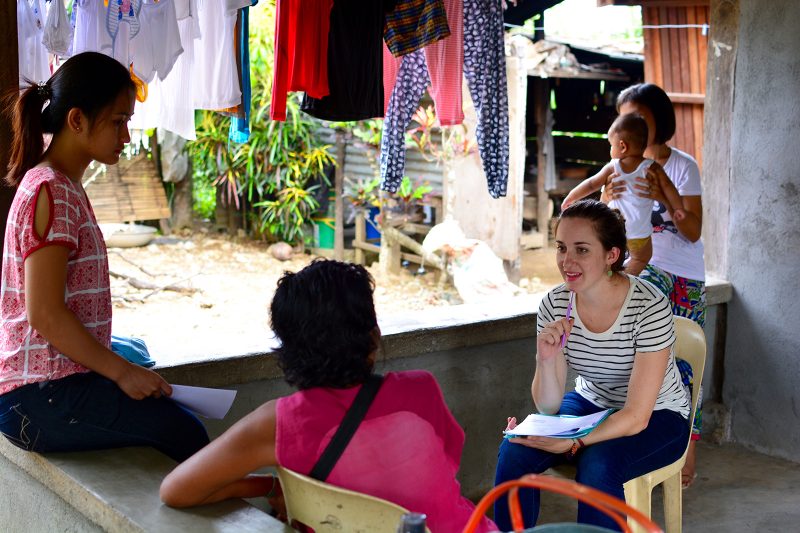“So you’ll ride a motorcycle for an hour, walk through mud for 45 minutes, go through the forest, and then you’ll be there. Bring a raincoat. And boots. And maybe a flashlight just in case.”
I nodded at the field office manager and went to pack a backpack.
When I showed up for this fellowship, I knew three things: I knew that I would be in the Philippines, I knew that I would do research, and I knew that I would spend most of my time out in the field. The rest of the details were somewhat of a mystery – which of the staff members I would work with, for example, and whether or not anyone had figured out where I should be living for the next two months. I arrived at the head office in early June with a smile and about 8,000 questions, and it turns out that that was a pretty perfect way to start.
This summer, I’m designing and implementing a social impact monitoring and evaluation system for Hybrid Social Solutions (HSSi), a relatively new social enterprise that “provides rural, off-grid communities in the Philippines with sustainable access to high-quality, affordable solar technologies aimed at spurring basic development.” On the ground, that boils down to finding the best available solar lights and other products, getting them to the communities that need them most, and setting up a technical support system that is affordable and easy to access. Communities here often end up without electricity for periods of time – both because of frequent blackouts and because typhoons cause massive damage to houses and infrastructure on a regular basis – and HSSi’s theory is that solar can improve their customers’ lives by providing more reliable and brighter lights to homes that rely on inconsistent electricity or often-dangerous kerosene lanterns. My job is to see if that’s true.
And so, these trips to the field. Five out of seven days a week, I’m hopping on the back of a motorcycle or a jeepney to little communities in Samar and Luzon to talk to the people who live there about their lives. I ask about their households, health, energy spending, and how safe they feel at night. I ask about their experiences with the solar lights, whether they’ve had problems with them, how often they use them, and what impact (if any) the lights have had on their day-to-day. Most of our clients are women who are members of microfinance institutions, and they tell me stories about using the lights for their kids to study at night, to help their pigs give birth, and to keep their sari-sari stores open hours later than was once possible. Rarely, a customer has had a problem with their light, and talking to them gives me the chance to understand how HSSi’s repair process is and isn’t working for them.
I’m knee deep in data collection right now and haven’t started on analysis, but I’ll be honest – I’m pretty pumped about bringing it all together to see what we learn. This summer has been an adventure in every sense of the word, and I’ve gotten to see a side of the Philippines that most tourists don’t get to access – the side that’s less beaches and bikinis and more thatched roof houses and working hard to make ends meet. It’s been an incredible experience and an incredible challenge, and being here has convinced me that this is the work I want to be doing after Jackson: research design and implementation for socially innovative companies, motorcycles and mud optional.
